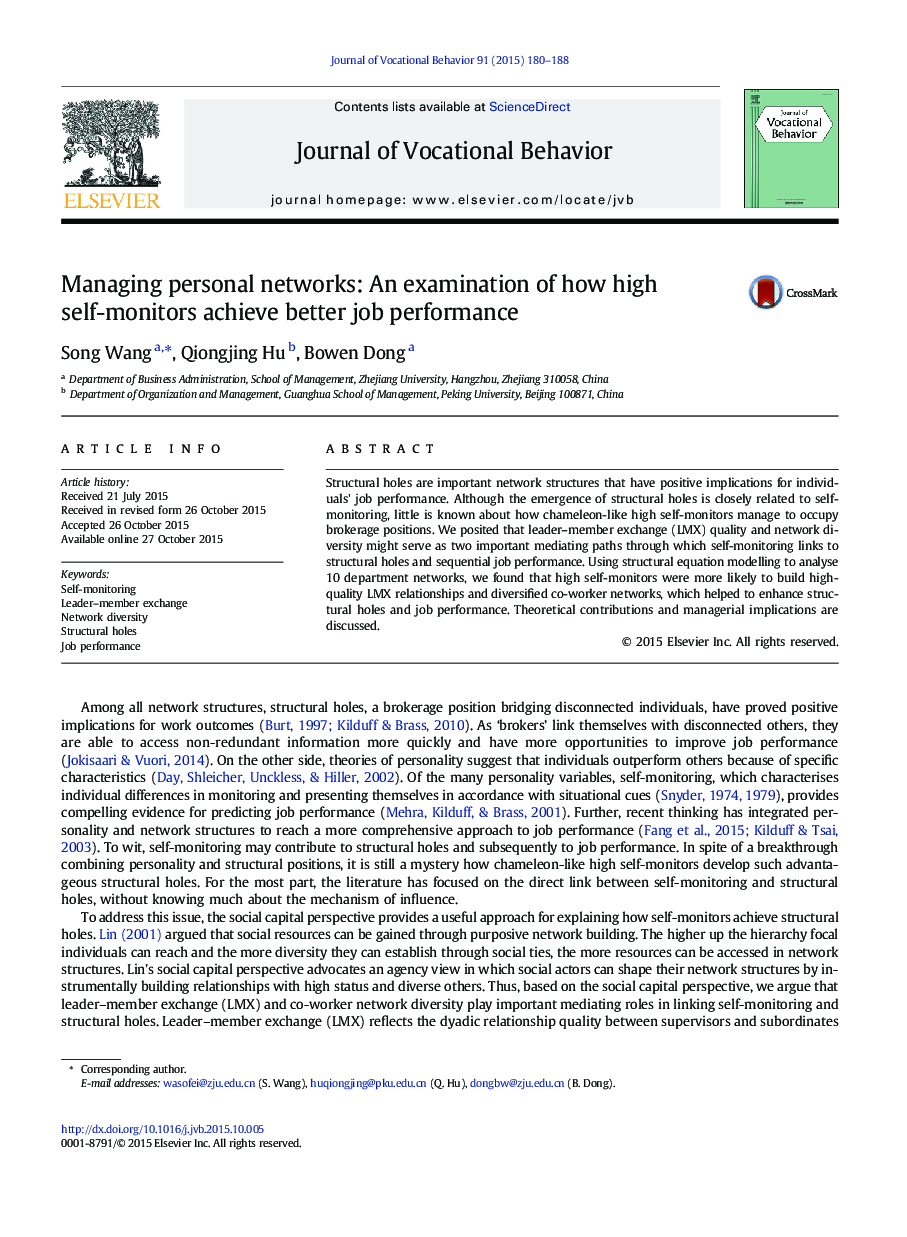| کد مقاله | کد نشریه | سال انتشار | مقاله انگلیسی | نسخه تمام متن |
|---|---|---|---|---|
| 886748 | 1471808 | 2015 | 9 صفحه PDF | دانلود رایگان |
• We explore the mechanism through which high self-monitors manage to occupy structural holes.
• High self-monitors would upwardly strengthen exchange with leaders and latently diversify their contacted co-workers to earn brokerage positions.
• The dyadic-specific leader–member exchange may influence individuals' structural holes throughout the entire network.
• By integrating two perspectives, this paper provides additional insight on the pathways toward performance improvement.
Structural holes are important network structures that have positive implications for individuals' job performance. Although the emergence of structural holes is closely related to self-monitoring, little is known about how chameleon-like high self-monitors manage to occupy brokerage positions. We posited that leader–member exchange (LMX) quality and network diversity might serve as two important mediating paths through which self-monitoring links to structural holes and sequential job performance. Using structural equation modelling to analyse 10 department networks, we found that high self-monitors were more likely to build high-quality LMX relationships and diversified co-worker networks, which helped to enhance structural holes and job performance. Theoretical contributions and managerial implications are discussed.
Journal: Journal of Vocational Behavior - Volume 91, December 2015, Pages 180–188
